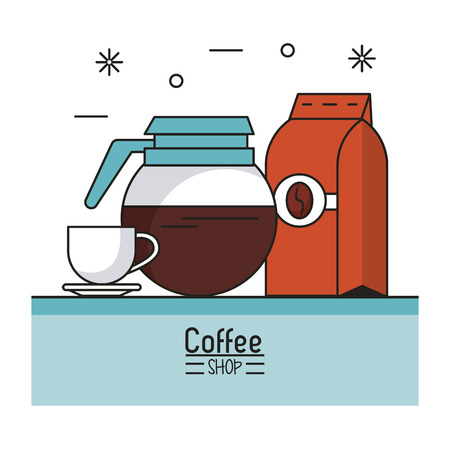1. Understanding the Basics of French Press Brewing
The French press, also known as a press pot or plunger pot, is one of the simplest and most beloved brewing methods among coffee lovers in the U.S. It’s popular not just for its rich, full-bodied flavor, but also for how easy it is to use at home. Whether youre just starting out or looking to level up your brew game, understanding the basics is key—especially when it comes to mastering the right ratios of coffee, water, and brew time.
What Is a French Press?
A French press is a manual coffee maker consisting of four main parts: the carafe (usually glass or stainless steel), the plunger, the metal mesh filter, and the lid. Unlike drip machines or pour-over setups that use paper filters, the French press allows more of the coffee oils and fine particles into your cup, creating a fuller flavor profile.
Why Ratios Matter
Using the right ratio of coffee to water—and knowing how long to let it brew—can make a huge difference in your final cup. Too much coffee can make it bitter and overpowering; too little can make it weak and underwhelming. Consistency is everything if you want to enjoy the same great taste every time.
Core Components That Affect Brewing
- Coffee: Use coarsely ground beans; finer grinds can slip through the filter and make your coffee muddy.
- Water: Clean, filtered water heated to around 195–205°F (about 30 seconds off boil) works best.
- Brew Time: The sweet spot is generally around 4 minutes, but this can vary depending on personal preference and grind size.
Typical French Press Coffee-to-Water Ratios
| Batch Size | Coffee (grams) | Water (ml) | Ratio (Coffee:Water) |
|---|---|---|---|
| Single Cup (12 oz) | 21 g | 355 ml | 1:17 |
| Two Cups (24 oz) | 42 g | 710 ml | 1:17 |
| Full Pot (34 oz / 1 liter) | 60 g | 1000 ml | 1:16.6 |
Nailing these ratios helps ensure you get a balanced extraction—meaning you’re pulling just enough flavor from the grounds without going overboard. In upcoming sections, we’ll dive deeper into how each variable affects taste and how you can fine-tune them to match your ideal cup.
2. The Golden Coffee-to-Water Ratio Explained
If youre diving into the world of French press coffee, getting your coffee-to-water ratio just right is key to brewing a flavorful, balanced cup. Too strong and it can be bitter and overpowering; too weak and it might taste watery and dull. Lets break it down in a simple way that works whether youre brewing a single mug or making coffee for a crowd.
What Is the Ideal French Press Ratio?
The most commonly recommended starting point is a 1:15 coffee-to-water ratio. That means for every 1 gram of coffee, use 15 grams (or milliliters) of water. This creates a well-balanced brew with rich flavor and smooth body—exactly what French press fans love.
French Press Ratio Chart
Use this quick reference chart to help you measure your coffee and water based on how much you want to brew:
| Batch Size | Coffee (grams) | Water (ml) |
|---|---|---|
| Single Cup (8 oz) | 13g | 195ml |
| Small Press (12 oz) | 20g | 300ml |
| Medium Press (24 oz) | 40g | 600ml |
| Large Press (34 oz) | 55g | 825ml |
How Ratio Impacts Flavor
The ratio you use has a big effect on how your coffee tastes. A stronger ratio like 1:12 will give you a bolder, more intense cup—great if you enjoy your coffee rich and full-bodied. On the other hand, a lighter ratio like 1:17 will produce a smoother, more subtle flavor profile.
Taste Adjustment Tips:
- Too strong or bitter? Try using slightly more water or less coffee next time.
- Tastes weak or watery? Increase the amount of coffee or reduce the water a bit.
- Using dark roast? You might prefer a slightly higher water ratio to mellow out bold flavors.
- Light roast lover? A lower ratio can bring out more of those delicate notes.
Measuring Made Easy
If you don’t have a scale, no worries—you can still get close by using tablespoons. A standard tablespoon holds about 5 grams of ground coffee. So for an 8 oz cup, use about 2.5 to 3 tablespoons of coffee and just under a cup of hot water (around 6.5 oz).
Quick Tip:
If you’re experimenting with different ratios, make small adjustments—change one variable at a time so you can clearly taste the difference. Keep notes until you find your personal sweet spot!
The beauty of the French press is that it’s super flexible. Once you understand how the coffee-to-water ratio affects flavor, you’ll be able to tweak your brew to match your taste preferences perfectly—whether youre sipping solo or sharing with friends.
![]()
3. Water Temperature and Brew Time Essentials
Getting the perfect cup of French press coffee isn’t just about how much coffee and water you use—it’s also about using the right water temperature and brew time. These two factors work closely with your coffee-to-water ratio to bring out the best flavors in your cup. If your water is too hot or too cold, or if you brew for too long or too short, it can throw off the balance—even if your ratios are spot on.
Why Water Temperature Matters
Water thats too hot can scorch your coffee grounds, making your brew taste bitter or burnt. On the flip side, water that’s not hot enough won’t extract all the good stuff from your coffee, leaving it flat or sour.
Ideal Water Temperature Range
| Temperature (°F) | Temperature (°C) | Effect on Coffee |
|---|---|---|
| 195°F – 205°F | 90°C – 96°C | Ideal range for balanced extraction |
| > 205°F | > 96°C | Over-extraction, bitter flavors |
| < 195°F | < 90°C | Under-extraction, sour or weak taste |
The easiest way to hit that sweet spot? Bring water to a boil, then let it sit for about 30 seconds before pouring it over your coffee grounds.
Brew Time: How Long is Just Right?
Brew time is just as important as temperature. With French press, you’re aiming for full immersion brewing—where coffee and water stay in contact throughout the process. Too short and your coffee may be underdeveloped; too long and it could become harsh or muddy.
Recommended Brew Times Based on Grind Size
| Grind Size | Brew Time (Minutes) | Notes |
|---|---|---|
| Coarse (ideal for French press) | 4 minutes | Smooth, full-bodied flavor |
| Medium-coarse | 3-4 minutes | Might yield lighter body and brighter notes |
| Fine (not recommended) | N/A | Can cause over-extraction and gritty texture |
A timer is your best friend here. Start timing as soon as you pour the water over your grounds. After four minutes, gently press down the plunger and serve immediately to avoid over-extraction.
4. How Grind Size Impacts Flavor and Extraction
When it comes to French press brewing, grind size isnt just a detail—its a game changer. Using the right grind size directly affects how your coffee tastes and how well its extracted. If you’ve ever had a cup that was too bitter or too weak, your grind size might be the culprit.
Why Grind Size Matters
The French press method relies on immersion brewing, meaning the coffee grounds sit in hot water for several minutes. Because of this longer contact time, using the correct grind size ensures that you extract just the right amount of flavor—no more, no less.
Coarse Grind Is Key
For French press, a coarse grind is generally recommended. This helps slow down extraction so that your coffee doesn’t become overly bitter or muddy. A finer grind can lead to over-extraction and sediment slipping through the mesh filter, while a coarser grind keeps things clean and balanced.
How It Ties Into Ratios
Your chosen coffee-to-water ratio works hand-in-hand with grind size. Even if youre using the ideal 1:15 ratio (1 gram of coffee to 15 grams of water), using a fine grind instead of coarse will throw off the balance, possibly leading to an over-extracted brew.
Grind Size vs. Brew Outcome
| Grind Size | Brew Time | Extraction Result | Taste Profile |
|---|---|---|---|
| Fine | Too fast or uneven | Over-extracted | Bitter, harsh |
| Medium | Moderate | Slightly over or under depending on time | Inconsistent flavors |
| Coarse (Recommended) | 4 minutes | Well-balanced extraction | Smooth, rich, full-bodied |
Troubleshooting Tips
- If your coffee tastes sour or weak: Try grinding slightly finer.
- If your coffee is bitter or sludgy: Go coarser with your grind.
- If you see lots of sediment: Make sure youre not using espresso or drip grind sizes.
Dialing in your grind size is just as important as getting your coffee-to-water ratio right. Together, they create the perfect balance for that smooth, flavorful cup every time.
5. Troubleshooting Common French Press Mistakes
If your French press coffee isn’t tasting quite right, don’t worry—you’re not alone. Even small changes in your coffee-to-water ratio, grind size, or brew time can lead to big differences in flavor. Let’s break down some of the most common issues and how to fix them.
Common Problems and How to Fix Them
| Issue | Possible Cause | How to Fix It |
|---|---|---|
| Bitter taste | Over-extraction from brewing too long or grind too fine | Try shortening brew time to around 4 minutes or use a coarser grind |
| Weak or watery flavor | Under-extraction from brewing too short or grind too coarse | Increase steep time slightly or use a finer grind; check your coffee-to-water ratio |
| Sour or sharp taste | Water too cool or under-extracted beans | Use water around 195°F–205°F; make sure youre steeping long enough |
| Muddy or silty texture | Grind size too fine for French press | Switch to a consistent coarse grind made for immersion brewing |
Tweaking Your Ratios and Timing
The standard French press ratio is about 1:15—one gram of coffee for every 15 grams (or milliliters) of water. But depending on your taste preferences, you might want to adjust that slightly. For example:
| Preference | Coffee-to-Water Ratio | Brew Time |
|---|---|---|
| Bolder, stronger cup | 1:12 – 1:14 | 4–5 minutes |
| Lighter, smoother cup | 1:16 – 1:17 | 3.5–4 minutes |
Quick Tips for Better Brews:
- Always use freshly ground coffee: Pre-ground loses flavor fast.
- Use filtered water: Tap water can add unwanted flavors.
- Preheat your French press: Keeps temperature stable during brewing.
- Stir before pressing: Helps extract more evenly.
- Avoid letting coffee sit in the press after brewing: It continues to extract and can turn bitter.
Troubleshooting is part of mastering the French press. Once you dial in your ideal ratio, grind size, and timing, youll consistently get rich, flavorful coffee that fits your taste just right.


